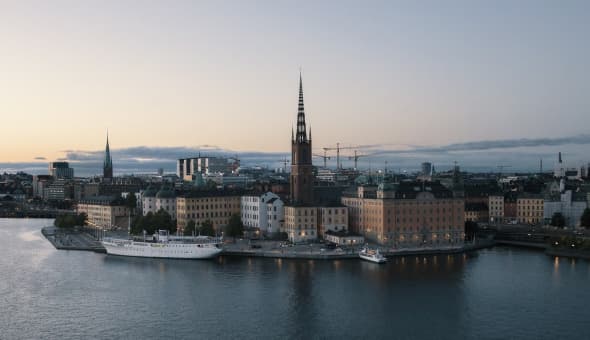Gender Quotas Database

Iceland
Northern Europe
Single / Lower House
Althingi / Parliament
| Total seats | 63 |
| Total women | 29 |
| Percentage of women | 46% |
| Gender Quota target | |
| Election year | 2024 |
| Electoral system | List PR |
| Quota type | |
| Election details | IDEA Voter Turnout - IPU Parline |
Voluntary Political Party Quotas*
| Party | Official Name | Details, Quota provisions |
|---|---|---|
| Independence Party | Sjálfstæðisflokksins |
"Gender equality is one of the core values of the Independence Party.When elected to boards and appointed to confidential positions of party institutions, whether in committees, councils or boards, equal proportions of the sexes shall always be observed" (Article 2). |
| Progressive Party (Centre Party) | Framsóknarflokkur |
When choosing candidates to all levels of the internal party structures and for electoral lists, each sex must be represented with at least 40 percent, unless for obvious and manifest impediments.(Party statutes 2005, article 13:8.) |
| The Left-Green Movement | Vinstrihreyfingin-grænt framboð (VG) |
When candidates are chosen for positions at all levels in the party structure, as well as for electoral lists, gender equality shall be observed. (Party Statutes 1999, article 3.) |
| The Social Democratic Alliance | Samfylkingin (S) |
At electoral lists, the main rule is to strive towards gender equality. In all elected bodies within the party, each sex should be represented with no less than 40 percent. If, among the candidates, one sex is represented by less than 40 percent, these candidates will be nominated without a vote. (Party statutes 1999, article 2:10.) |
* Only political parties represented in parliament are included. When a country has legislated quotas in place, only political parties that have voluntary quotas that exceed the percentage/number of the national quota legislation are presented in this table.
Additional information
Iceland has no quotas regulation for the Lower Camera or in the Sub-national level. However, many political parties regulate voluntary quotas:
- Samfylkingin: each sex should be represented by, at least, 40%
- Vinstrihreyfingin-grænt framboð: gender equality has to be ensured when candidates are chosen.
- Framsóknarflokkur: as in the case of Samfylkingin, each sex has to be represented by, at least 40%.
- Kvennalistinn: just composed of women.
Sources
Additional reading
- See the latest updates on Iceland on iKNOW Politics
- World Economic Forum, 2017, This is why Iceland ranks first for gender equality
- European Parliament, 2011, The policy on gender equality in Iceland
-
Kristjánsson, S. 2003. ‘Iceland: A Parliamentary Democracy with a Semi-presidential Constitution’, in K. Ström, W.C. Muller and T. Bergman (eds) Delegation and
Accountability in Parliamentary Democracies, Oxford: Oxford University Press, pp.
399–417. -
Kristjánsson, S. 2002. ‘Iceland: From Party Rule to Pluralist Political Society’, in
H.M. Narud, M.N. Pedersen and H. Valen (eds) Party Sovereignty and CitizenControl. Selecting Candidates for Parliamentary Elections in Denmark, Finland, Iceland and Norway, Odense: University Press of Southern Denmark, pp. 107–66. - Narud, H.M., Pedersen, M.N. and Valen, H. (eds) 2002. Party Sovereignty and Citizen Control. Selecting Candidates for Parliamentary Elections in Denmark, Finland, Iceland and Norway, Odense: University Press of Southern Denmark.
- Bergqvist, C. (ed.) 1999. Equal Democracies? Gender and Politics in the Nordic Countries. Oslo: Scandinavian Universities and the Nordic Council of Ministers.
- Christensen, A-D. 1999. ‘Kvinder i de politiske partier’ in Christina Bergquist et al Likestilte Demokratier? Kjönn og politikk i Norden. Oslo: Universitetsforlaget.
- Inter-Parliamentary Union. 1997. Democracy Still in the Making: A World Comparative Study. Geneva: Inter-Parliamentary Union.
- Styrkársdóttir, A. 1986. ‘From social movement to political power: the new women’s movement in Iceland’, in D. Dahlerup (ed.) The New Women’s Movement: Feminism and Political Power in Europe and the US, Newbury Park: Sage, pp. 140–57.
- Icelandic Parliament website, http://www.althingi.is/
Explore more resources: Europe | Global
Know about useful additional reading for Iceland? Tell us!
Submit feedback
Submit questions or comments about the Data or Tool
How did you find out about this? What do you like about it? What did you expect but did not find in using the Data or Tool?
To see how we handle your personal data, please read our Privacy Policy.
